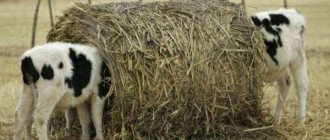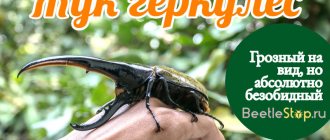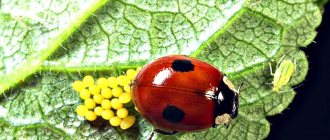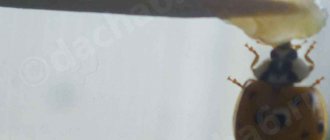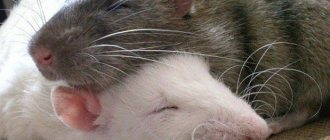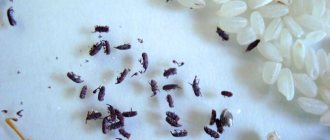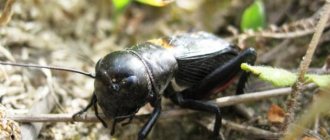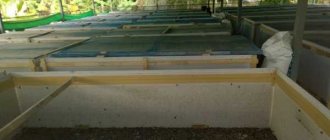The most numerous group of insects are beetles. At the moment, there are about 400 thousand species of beetles, differing in appearance, size, lifestyle, etc. An interesting representative of beetles is the Hercules beetle. It attracts attention with its impressive size, the Hercules beetle is the largest species of the genus Dynastes and one of the largest beetles in the world.
Hercules beetle (Dynastes hercules)
Origin of the species and description
Photo: Hercules beetle
Hercules is a coleopterous insect. It belongs to a very large family of lamellaridae. Today it numbers more than thirty thousand species and is replenished every year. Representatives of this species are widespread throughout the globe. The rhinoceros beetle, as it is often called, belongs to the subfamily of hollow beetles.
This subfamily has a striking distinctive feature - growths on the pronotum and head. For this reason, it is difficult to confuse such insects with anyone else. Due to specific growths, Hercules can reach seventeen centimeters in length.
Video: Hercules beetle
The Hercules beetle, among all insects, is famous for its incredible strength. It can carry and lift various objects whose weight is 850 times the weight of the insect itself. Hercules surprises with its size no less than with its strength. The male can reach seventeen centimeters, the female is smaller - about eighty millimeters.
During flight, the insect's wings open as much as twenty centimeters. Hercules can also be called a record holder in terms of weight. The weight of an adult can reach one hundred and eleven grams. This is a record figure among representatives of the lamellar species. Only the Goliath beetle can come close to this indicator. Very rarely a goliath weighs more than one hundred grams.
Miraculous acquisition of immortality
At a time when Hercules was very young, he went to fight the Minyan king Ergin, to whom Thebes paid tribute. As a reward for his release from tribute, the king of Thebes gave Hecules the hand of his daughter Megara. Hercules and Megara had three children. One day, Hercules was returning home after a trip, and Hera sent him into a fit of madness, during which he killed his wife and children. When Hercules came to his senses, he was horrified by his action. Heartbroken, he went to Delphi to the oracle to find out how he could atone for his guilt. The oracle told him to go to the king of Tiryns Eurystheus and carry out any of his orders. The oracle also said that if Hercules completed all the tasks assigned to him, he would become immortal.
Appearance and features
Photo: Hercules beetle Red Book
In terms of external qualities, the Hercules beetle is considered quite terrifying. It has impressive weight, large dimensions, and black horns. The upper horn is large and serrated, the lower one is smaller. The large horn is slightly rounded and directed forward.
The size of the upper horn will determine the size of the rhinoceros beetle itself. The size of an adult is directly dependent on the quantity and quality of nutrients consumed.
In this case, the nutrients supplied during the pupal and larval stages play a role. During development, one larva can reach a size of eleven centimeters. The power of Hercules is highly valued among fans of animal fights. People often organize exhibition fights between scorpions, lobsters, and rhinoceros beetles. The latter often emerge victorious.
In addition to weight and dimensions, Hercules has other external features:
- beetles are divided into males and females. Females are always much smaller in size than males;
- Sexual differences are easy to determine not only by the size of the insect. The colors also give them away. Males have a black head, horns, and a set of forewings that can be brown or various shades of green. Females are always brown-black;
- According to recent discoveries, the Hercules beetle can change its color depending on its habitat. The color of the shell can be used to assess the level of humidity in the area.
general information
Hercules is called that way because of its large size and power. Indeed, he can only be compared with Hercules, the hero of ancient Slavic myths. The largest among insects, surpassing in strength and weight almost all representatives of its species, the insect attracts the attention of many lovers of unusual representatives of the fauna.
The Hercules beetle looks (even in the picture) quite scary. If we consider a brief description, then:
- it has large horns on its head, which is why it is often called the rhinoceros beetle,
- on the back there are growths specific to insects of this species,
- The body length reaches 17 cm, and the weight of an adult beetle can be more than 100 g (thanks to this indicator, it is included in the Guinness Book of Records).
The beetle has been a great help to science thanks to its coloration. Scientists were able to identify special substances that change the color of the shell. These substances are produced to varying degrees depending on environmental conditions, and the color changes very quickly, which helps the insect survive in almost a wide variety of conditions.
Among the distinctive external features, one can also note the division of Hercules into males and females (and females are always smaller in size, unlike males). The sex of an individual can also be determined by its color - females have black-brown wings, while males, as a rule, have green wings. Rolled oats can acquire one color or another depending on its living conditions, or more precisely, the moisture content of the soil and air.
Where does the Hercules beetle live?
Photo: Hercules beetle
The most favorite places for Hercules beetles are tropical and subtropical forests. Today, a large population of this insect can be found in South America, Venezuela, Brazil, Bolivia, Panama, and Mexico. Also, many individuals live on islands located in the Caribbean Sea. Beetles are found in smaller numbers in Colombia, Ecuador, and Peru. Small settlements have also been seen in other countries with a pronounced tropical climate and a large number of forests with high humidity.
Despite the prevalence of the beetle in the tropics, individual individuals live in many countries around the world in domestic conditions. Today, purchasing such a pet for yourself is not a problem. There are many specialized online sites and stores on the Internet that offer both larvae and adult beetles. However, creating the necessary conditions for Hercules to live is quite difficult.
It is important to choose a container that is suitable in size, ensure a high temperature and a suitable level of humidity in it. The optimal temperature range is considered to be between 20 and 25 degrees. Humidity should be at least seventy percent. It is also important to take care of the beetle getting food in a timely manner and providing enough space for climbing.
Keeping at home
In the 20th century, due to a decrease in the number of Hercules beetles, they began to be bred in insectariums. Keeping insects is accessible not only to entomological scientists, but also to simply lovers of exotic fauna. For a pair of beetles or a male and two females, you will need a container with minimum parameters of 50x50 cm, height 100 cm. A special substrate made of peat, wood, and oak leaves is poured onto the bottom.
Attention. All ingredients taken from the natural environment must be treated with high temperature, this will get rid of ticks and other parasites.
Several driftwood and pieces of bark are placed on the ground for beetles to climb. The optimal temperature for insectarium inhabitants is 20-25°C, humidity within 70%. No additional lighting required. Additional heat sources are not needed; they will dry out the air and food. Newbies to keeping tropical insects believe that rising temperatures will have a beneficial effect on their pets. But that's not true. At +28°C the larvae become lethargic and feed poorly. Heat can lead to their death. Maintaining the required level of humidity is not difficult; just spray the substrate daily with a spray bottle of water.
What does the Hercules beetle eat? In captivity, they do not have to be fed only tropical fruits. Adults eat soft, juicy apples, pears, peaches, grapes, and bananas. The fruits are placed in a feeder and replaced every day. Drosophila flies appear near the fruit, but they are not dangerous to the beetles. The larvae eat rotten wood and a mixture of fallen leaves, and it is recommended to give them dry dog food.
Reproduction of beetles in captivity
To breed insects, a 30-35 cm layer of substrate is poured into a container with a volume of at least 100 liters. It must contain rotten wood. Deciduous tree varieties are suitable - oak, birch, beech. The soil needs moderate moisture; it should not dry out or become waterlogged. Both conditions are harmful to eggs and larvae. It is believed that each larva will require 10-15 liters of substrate. It needs to be replaced when the layer is significantly reduced or there is a large amount of excrement (more than 50%).
Attention. Small larvae of the first instar can be kept in groups of 10, and individuals of the last instar should be placed in separate containers. Large larvae do not like competitors when sharing food and space.
Adult larvae require a large volume of compost. When changing material, it is recommended to leave part of the bedding. The old substrate is mixed with the new one. This will preserve the beneficial bacteria that have multiplied in the litter. Habitual crops will prevent upset of the larva's digestive system.
The end result of proper care for almost two months is a huge, fleshy larva. In some cases, the owners recorded a weight of 140 g. The larva is ready for pupation in the substrate. The pupa will be placed in a special cradle made of wood and plant particles. Before the young beetle emerges, the pupa shell becomes thinner and becomes paper-like. The young Hercules tears it apart and gradually frees himself. In the insectarium, it climbs onto a snag, where the elytra darken and harden.
What does the Hercules beetle eat?
Photo: Large Hercules beetle
The diet of the rhinoceros beetle consists only of organic materials in the stage of decomposition. Most often, the insect prefers to eat overripe fruits. One such fruit can last an adult for several days. The beetle will suck out nutrients to the last. Sometimes rhinoceros beetles feed on fallen leaves and soft tree bark.
Beetles find most of their food directly on the ground. However, if necessary, they can climb trees and fly from one place to another. The wingspan can reach twenty centimeters, and the insect's legs are quite long and have tenacious claws. All this makes Hercules a wonderful earner.
The search for food may be accompanied by combat skirmishes between adults. Violent clashes often end in death. Powerful horns easily push through shells.
Nutrition
The ground beetle lives in forests, parks, gardens and personal plots, where there is a large accumulation of all kinds of food. The favorite “dishes” of beetles were and remain:
- caterpillars;
- larvae;
- aphid;
- slugs;
- snails
The principle of hunting and capturing prey is extremely simple. When a beetle discovers its “dinner,” a special fluid is activated in the glands hidden in its powerful jaws. The beetle sprays its victim with this composition, waits a few minutes and then begins to eat.
The injected composition immobilizes the insect and softens it into a kind of pulp, which the beetle easily absorbs. After a hearty lunch, the ground beetle can return to its shelter and not come out for several days in a row to digest the food. After complete digestion, after two or three days, the beetle goes hunting again.
Some species, such as amara and ophorus, prefer exclusively plant foods. Their diet includes leaves and soft parts of plants. Such beetles can harm crop plants.
Features of character and lifestyle
Photo: Hercules beetle from the Red Book
The lifestyle and behavior of beetles has its own characteristics. Beetles are predominantly nocturnal. During the day they often hide under fallen leaves. These insects spend most of the day in search of food. They slowly move along the ground, choosing suitable fruits and berries for themselves. Sometimes the Hercules beetle climbs a tree to feast on tree sap. He extracts it from cracks formed in the bark of soft tree species.
The character of Hercules can be called militant. Rhinoceros beetles often challenge each other to so-called duels. During calling, insects use the stridulation apparatus. When the duelists discover each other, they immediately rush into battle.
In relation to humans, the Hercules beetle can be called peaceful. He will never attack or cause harm. It is also harmless to vegetable gardens and fields with agricultural crops. Thanks to these qualities, the Hercules beetle is popular among exotic lovers. Many people keep these beetles at home without fear of handling them.
The lifestyle and feeding habits of the rhinoceros beetle bring great benefits to the planet. They are excellent organic recyclers. Insect larvae crush organic matter and pass it through their intestines.
Nutrition
The beetle's favorite treat is fruit. Basically he likes them slightly rotten. Beetles are not picky when it comes to food. They can sit in one place for several days and suck out all the contents from a rotten fruit.
In most cases, these insects move on the ground. But there are times when they see a fruit they like high on the tree. In such cases, their ability to climb vertical surfaces saves them; without the slightest difficulty they cover considerable distances along the trunk of a tall tree in order to feast on its fruit.
The search for food and competition for a female can sometimes pit two males against each other. A strong fight with claws can break out between them, with the shells being pressed and sometimes even fatal for one of the rivals. The larvae's favorite treat is rotten bark or tree leaves.
Social structure and reproduction
Photo: Hercules beetle in nature
In the social structure of beetles, the highest level is always occupied by the strongest. Only strong males have the right to continue their kind. For this reason, during the mating period, once peace-loving insects turn into irreconcilable fighters. While courting the females, they actually fight with each other, trying to push through the enemy's shell.
Damage to the opponent's coat is almost half the success in the fight for the female. The battle of competitors most often continues until the last. One of the beetles must retreat or die. Rhinoceros beetles rarely retreat, so most battles end in the death of one of the males. The mating season always occurs during the rainy season in the tropics.
The male who wins the fight begins the process of mating with the female. Females usually lay eggs in slightly rotting wood bark. During their short life, the females of this insect manage to lay no more than a hundred eggs. Each time the female tries to lay as many offspring as possible, because the life expectancy of the strongest beetle is very short - no more than a year. The eggs turn into larvae in about two months. Then they develop in three stages.
Each of them has its own specific duration:
- the first takes about fifty days;
- second – fifty-five days;
- the third is the longest and takes at least four hundred days.
What are the reasons for the disappearance
The beetle is an endangered species and is protected. The reduction in numbers is caused by human activity, which contributes to the reduction of natural areas suitable for Hercules to live in.
The beetle can lose its home due to active deforestation of tropical forests. Local residents also hunt for insects for the following reasons:
- larvae are used in food instead of meat;
- the beetle's body and horn are used in alternative medicine to eliminate many diseases;
- the insect is the dream of many collectors.
There is a threat of complete extinction of the species. For several years now, attempts have been made to propagate the beetle under artificial conditions, which are successful when favorable conditions are maintained.
Natural enemies of the Hercules beetle
Photo: Large Hercules beetle
Like any other insect, the Hercules beetle has enemies. Beetles may consider themselves their main enemy. A large number of adult males die during the mating period, fighting with each other. However, this makes it possible to purify the further genus, because only the strongest representatives of the species reproduce.
The Hercules beetle is hunted by many predatory animals: mammals, rodents, reptiles, bats. They are not afraid of the large size of the insect. However, the rhinoceros beetle is never an easy target. He uses every opportunity to protect himself. The main weapon is a large, powerful horn, strength, tenacious legs, and large wings.
Beetles fly well, which helps them quickly hide from ground enemies. Various parasites, for example, ticks, can also be called enemies of Hercules. However, they do not eat insects. They do harm in a different way. Ticks can damage the beetle's body and significantly undermine its health. This shortens the animal's overall lifespan.
Adults are not as often endangered as defenseless larvae. It is at this stage of development that Hercules most often dies. The larvae become quick and easy prey for ants, large ground beetles, and centipedes. The larvae are also killed by the Scolia wasp. The wasp pierces the body of the larva with its sting and lays its eggs in it.
Does it harm a person?
Hercules does not harm agriculture. The harvest will be preserved if there is a representative on the site. Outwardly, Hercules looks scary, but the beetle is safe for humans. The insect does not attack people, and is also not a carrier of diseases. You can pick up a giant without fear.
This beetle is completely safe for humans
Population and species status
Photo: Hercules beetle
It is almost impossible to estimate the population of this animal with high accuracy. However, one can definitely say about the status of the species - the species of Hercules beetles is significantly declining. There is only one reason for this reduction - human intervention.
In particular, the population decline is influenced by the following factors:
- Massive deforestation. This is the most pressing problem of our time. By cutting down forests, people deprive Hercules of its essentials - home and food.
- Air and water pollution. This factor affects the reduction in the number of all animals.
- Extermination of Hercules by people. For example, this amazing animal is often captured and sold for big money to collectors. Also in some countries this insect is used in the production of medicine.
Scientists have begun assessing the health of the forest by assessing the rhinoceros beetle population. If there are a lot of insects, this is an excellent indicator indicating the good state of the ecological situation in the forest.
What are some interesting facts?
There are several interesting facts associated with the beetle. The insect received its name in honor of the ancient Greek hero. The giant is known for being able to lift objects weighing 800 times heavier than the Hercules itself. Therefore, this beetle was often used as a kind of entertainment.
The insect was sent to fight with a scorpion. Most often it was Hercules who won.
Another interesting fact is that an insect can instantly change the color of its wing covers. This interested scientists from different parts of the world.
Some hobbyists breed insects in order to increase the population size. A pair of medium-sized beetles will cost $300-500. The price directly depends on the size, color and other characteristic features.
This video will show the stages of development of the Hercules beetle:
Taxonomy
D. hercules
has a complex taxonomic history and is known by several synonyms.
It is in the subfamily Dynastinae (rhinoceros beetles) in the large family Scarabaeidae (commonly known as scarab beetles). Not counting the subspecies D. hercules
, seven more species are known in the genus
Dynasty
.
Subspecies
Several subspecies of D. hercules
have been named,[1][2] although there is still some uncertainty regarding the validity of the named taxa.[3][4]
- Dynastes hercules ecuatorianus
Ohaus, 1913. - Dynast Heracles hercules
(Linnaeus, 1758) - Dynastes hercules lichyi
Lashom, 1985 - Dynastes hercules morishimai
Nagai, 2002 - Dynastes hercules occidentalis
Lashom, 1985 - Dynastes hercules paschoali
Grossi & Arno, 1993 - Dynastes hercules reidi
Chalumeau, 1977.
(= Baudrii
Pynchon, 1976) - Dynastes hercules septentrionalis
Lashom, 1985 (=
Tuxtlaensis
Moron, 1993) - Dynastes hercules takakuwai
Nagai, 2002 - Dynastes hercules trinidadensis
Chalumeau & Reed, 1995 (=
bleuzeni
Sylvester & Deschambres, 1995)
Recommendations
- "Hercules Beetle, Dynasty of Hercules." BioLib.cz. 2022. Retrieved 2017-07-09.
- Huang, J. P. (September 15, 2022). "Hercules beetles (subgenus Dynastes, genus Dynastes, dynastidae) - a revision study based on the integration of molecular, morphological, ecological and geographical analyses." Miscellaneous Publications, Museum of Zoology, University of Michigan
.
206
: 1–32 - via ResearchGate. - ^ a b
Ratcliffe, B.C.;
Cave, R. D. (2015). "Dynastic scarab beetles of the West Indies (Coleoptera: Scarabaeidae: Dynastinae)". Bulletin of the University of Nebraska State Museum
.
28
: l – 346. - Huang J, Knowles L. The species-subspecies puzzle: quantitative delineation from the integration of multiple data types within a unified Bayesian approach to Hercules beetles. Systematic biology
, vol.
65
, 2015, 15 p. - ^ a b c d f g gram h i
Keller, O.; Cave, R. D. Cave (2016). "The Hercules beetle Dynastes hercules (Linnaeus, 1758) (Insecta: Coleoptera: Scarabaeidae)" (PDF). University of Florida, IFAS Extension. Retrieved 2017-05-20. - "The largest species of beetle." Guinness Book of Records. Retrieved 2017-05-20.
- Lavine, L.; Gotoh, H.; Brent, C. S.; Dvorkin, I.; Emlen, D. J. (2015). "Exaggerated growth of a trait in insects". Annual Review of Entomology
.
60
: 453–472. Doi:10.1146/annurev-ento-010814-021045. PMID 25341090. - Huang, J. (2016). "Parapatric genetic introgression and phenotypic assimilation: conditions for testing for introgression between Hercules beetles ( Dynastinae
)."
Molecular Ecology
.
25
(21):5513–5526. Doi:10.1111/mec.13849. PMID 27661063. - ^ a b c
Russart, M.;
Colomer, J. F.; Tabarrant, T.; Vigneron, J. P. (2008). “Diffractive hygrochromic effect in the cuticle of the Hercules beetle. Dynasty of Hercules
."
New Journal of Physics
.
10
(3): 033014. Bibcode:2008NJPh ... 10c3014R. Doi:10.1088/1367-2630/10/3/033014. - ^ a b c
Hinton, H. E.;
Jarman, G. M. (1973). "Physiological change in the coloration of the elytra of the Hercules beetle, Dynasty of Hercules
."
Journal of Insect Physiology
.
19
(3):533–539. Doi:10.1016/0022-1910(73)90064-4.. - ^ a b c d f f gram
Toussaint, A. (2015). "Dynast Hercules (Hercules Beetle)" (PDF). Online Guide to the Animals of Trinidad and Tobago (University of the West Indies). Retrieved February 17, 2022. - Dutrillaux B.; Dutrillaux A.-M. (2013). "South American origin of the genus Dynastes (Coleoptera: Scarabaeidae: Dynastinae) demonstrated by chromosomal analyses." Cytogenetic and genomic studies
.
147
(1):37–42. Doi:10.1159/000351210. PMID 23735513. - Krell F., Krell V. Longevity of the Western Hercules beetle. D. grantii
Horn (Coleoptera: Scarabaeidae: Dynastinae).
Bulletin of coleopterologists
, vol.
69
, 2015, 1 p. - ^ a b
Kulikovsky, A. “The Dynasty of Hercules.” Animal Diversity Network. Retrieved 2017-05-20. - Beebe, W. (1947). "Notes on the Hercules beetle, Dynastes hercules (Linn.), in Rancho Grande, Venezuela, with special reference to fighting behavior." Department of Tropical Research, New York Zoological Society
.
32
: 109–116. - "Hercules beetles." University of Kentucky Entomology. 2008. Retrieved 2017-05-19.
- Crum, R. (1996). "Journal of Experimental Biology" (PDF). 199
: 609–612. Magazine citation required | log = (help)

